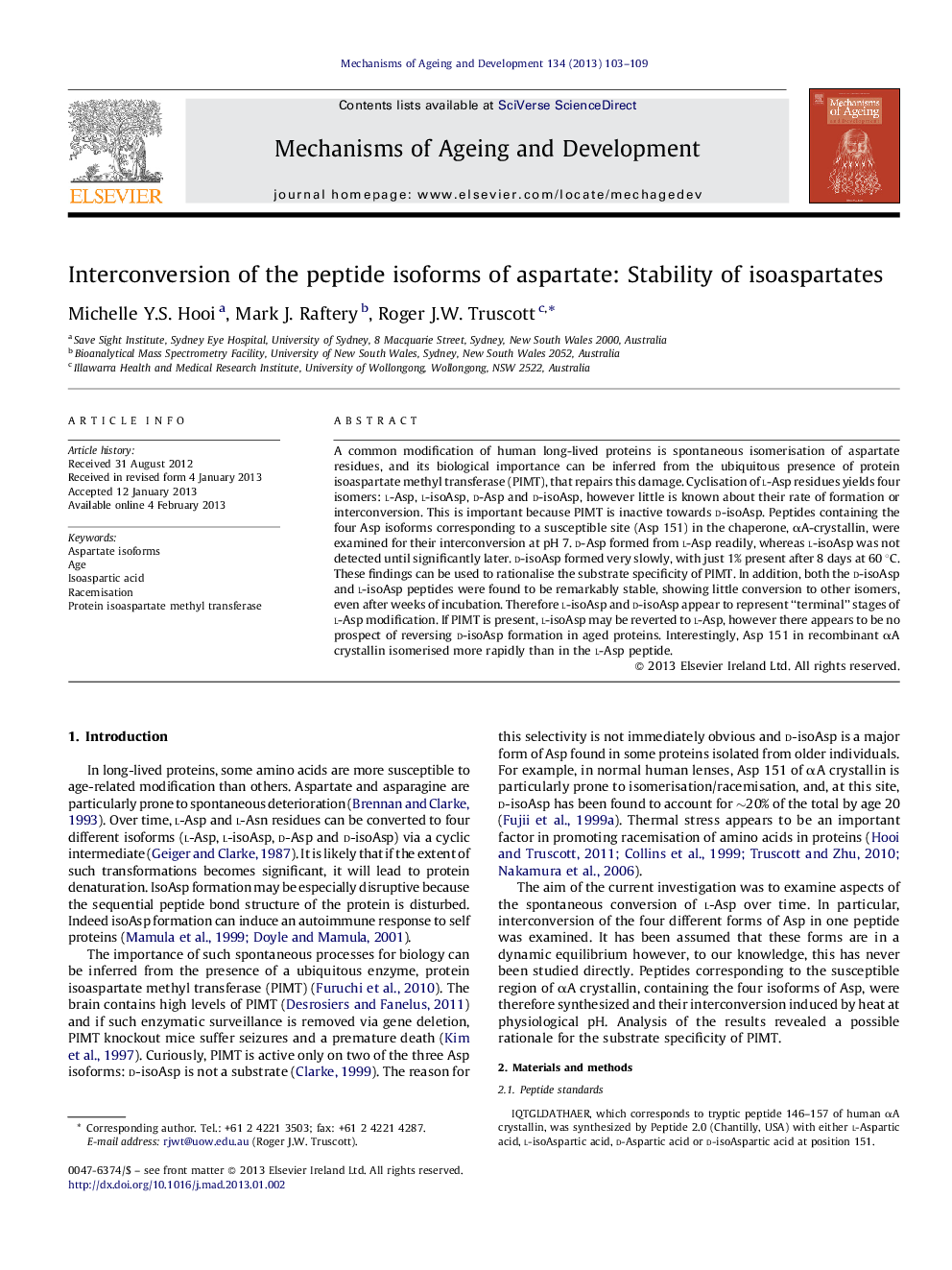| Article ID | Journal | Published Year | Pages | File Type |
|---|---|---|---|---|
| 1919387 | Mechanisms of Ageing and Development | 2013 | 7 Pages |
A common modification of human long-lived proteins is spontaneous isomerisation of aspartate residues, and its biological importance can be inferred from the ubiquitous presence of protein isoaspartate methyl transferase (PIMT), that repairs this damage. Cyclisation of l-Asp residues yields four isomers: l-Asp, l-isoAsp, d-Asp and d-isoAsp, however little is known about their rate of formation or interconversion. This is important because PIMT is inactive towards d-isoAsp. Peptides containing the four Asp isoforms corresponding to a susceptible site (Asp 151) in the chaperone, αA-crystallin, were examined for their interconversion at pH 7. d-Asp formed from l-Asp readily, whereas l-isoAsp was not detected until significantly later. d-isoAsp formed very slowly, with just 1% present after 8 days at 60 °C. These findings can be used to rationalise the substrate specificity of PIMT. In addition, both the d-isoAsp and l-isoAsp peptides were found to be remarkably stable, showing little conversion to other isomers, even after weeks of incubation. Therefore l-isoAsp and d-isoAsp appear to represent “terminal” stages of l-Asp modification. If PIMT is present, l-isoAsp may be reverted to l-Asp, however there appears to be no prospect of reversing d-isoAsp formation in aged proteins. Interestingly, Asp 151 in recombinant αA crystallin isomerised more rapidly than in the l-Asp peptide.
► Aspartates in aged proteins degrade to 4 isoforms. ► Two isoforms, l-isoAsp and d-isoAsp, are stable. ► l-Asp isomerises to d-Asp initially and to l-isoAsp more slowly. d-isoAsp appears much later. ► Substrate specificity of PIMT can be explained by differential rates of formation of the Asp isoforms.
